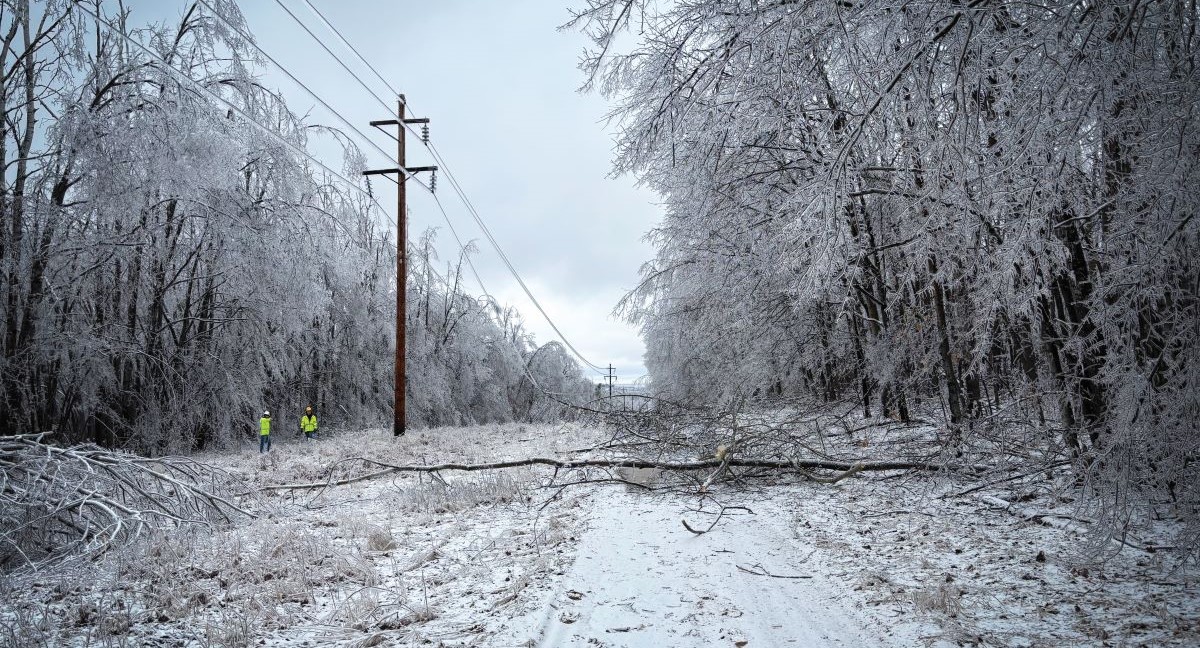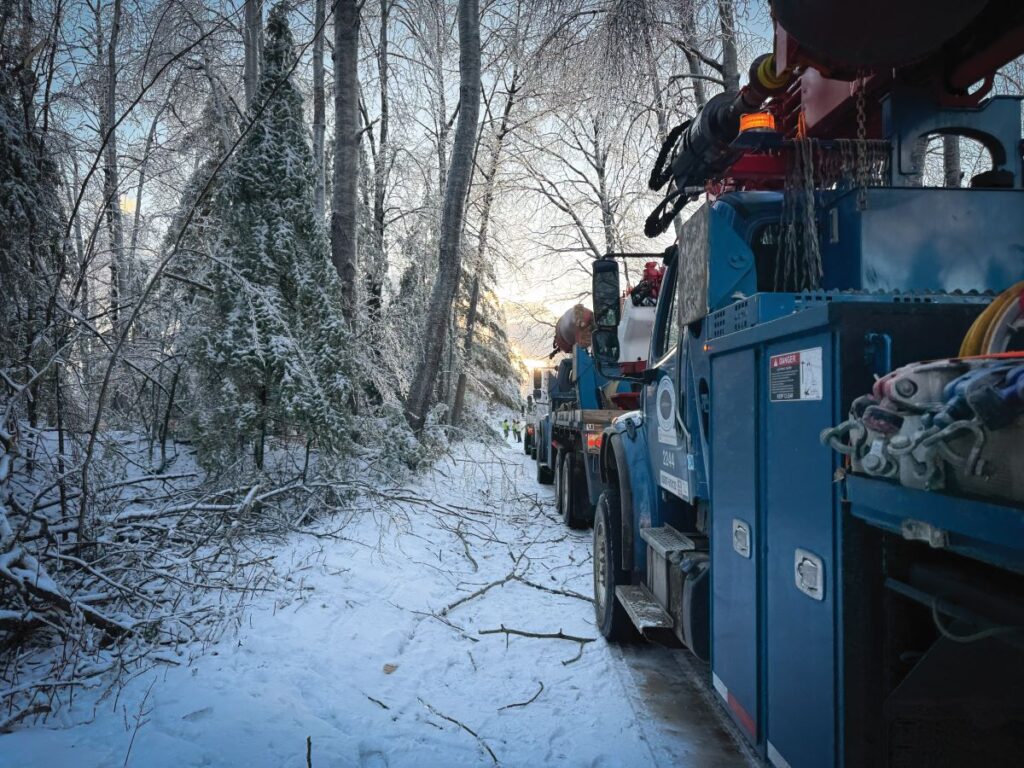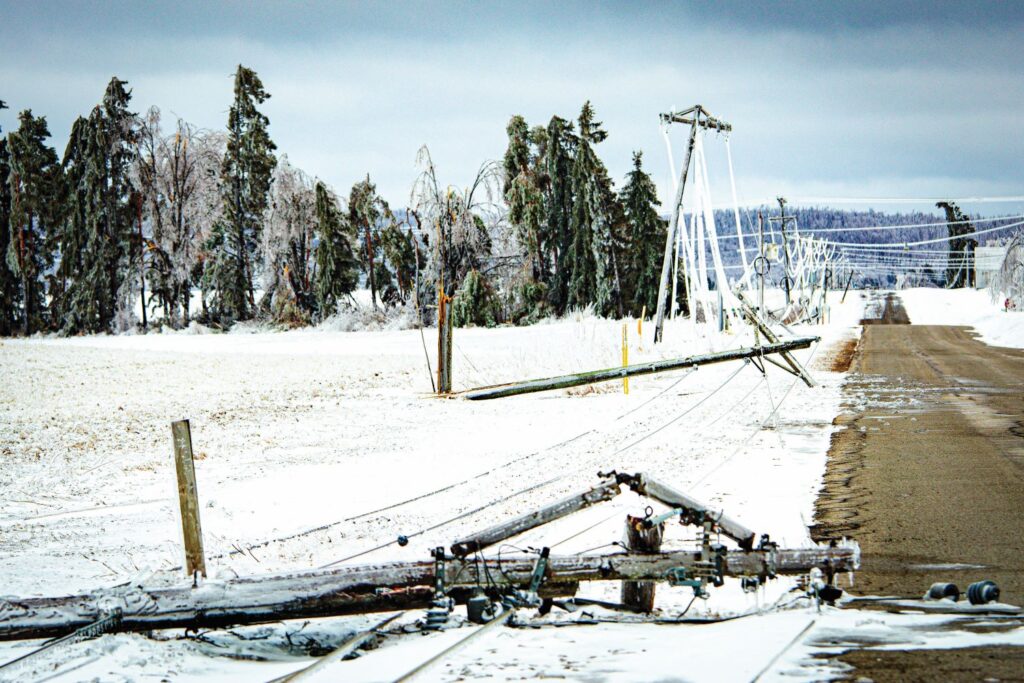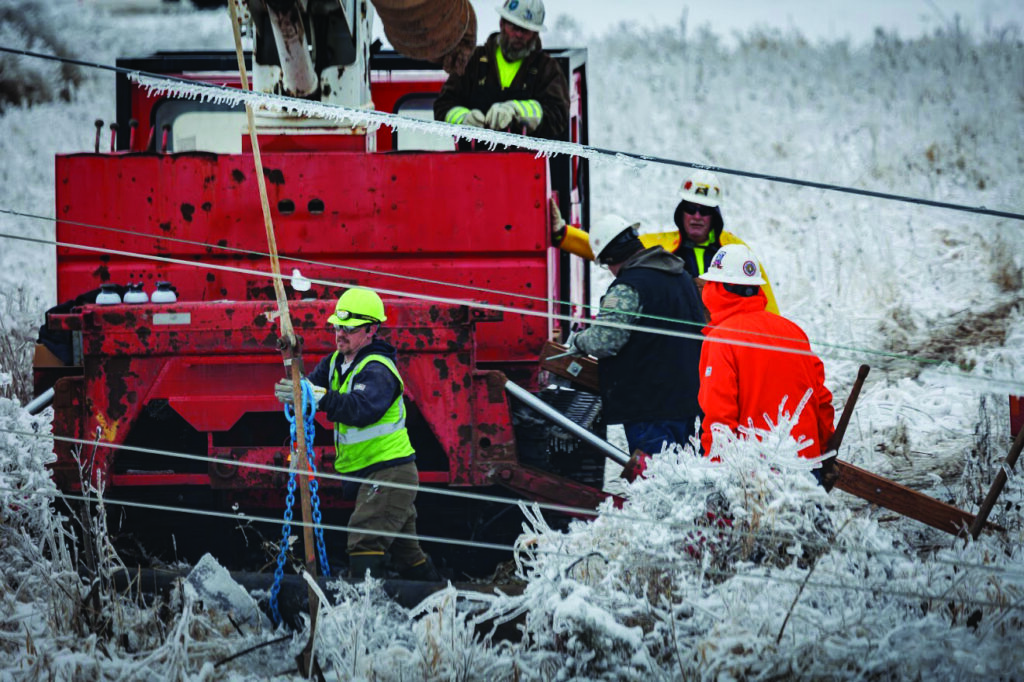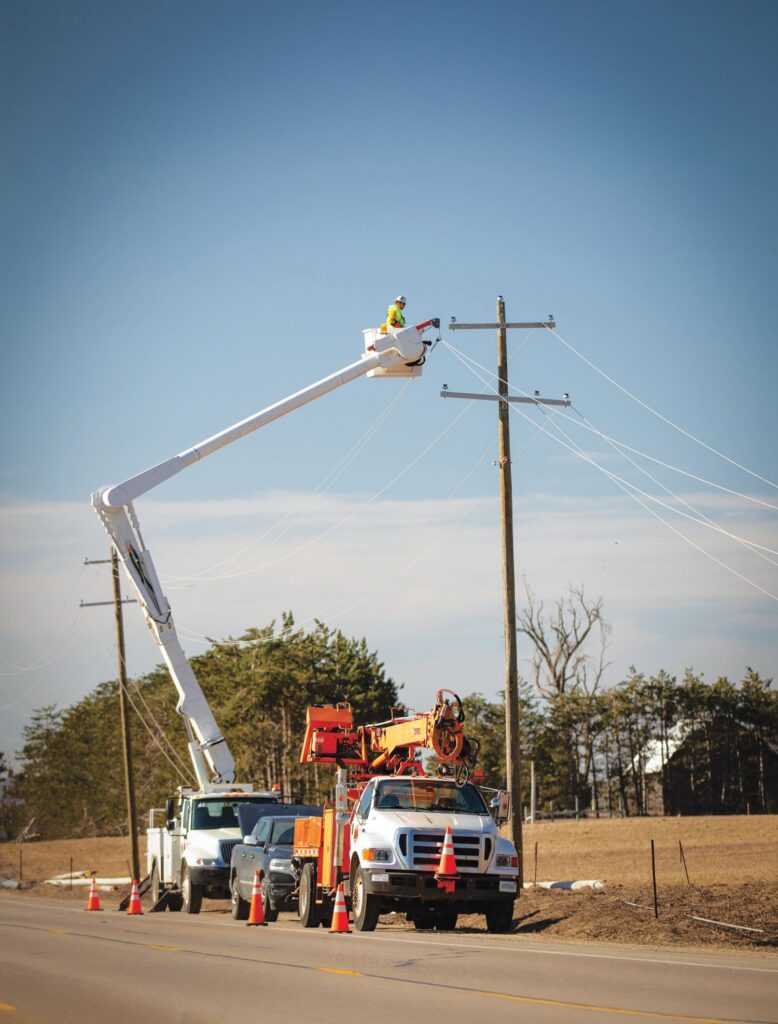Ice can be beautiful—but not when it brings disaster to a region.
In Northern Michigan, beauty turned brutal in hours. What began as a quiet snowfall late on March 28 quickly escalated into a catastrophic ice storm, coating counties at the tip of the mitten in a thick, glassy shell. Trees snapped under the weight of more than an inch of ice, power lines were pulled down like string, and thousands of electric poles splintered or collapsed under the strain. Nearly 100,000 cooperative member homes and businesses lost power—many for far longer than expected.
This storm was one of the most challenging Michigan co-ops had ever faced. The damage wasn’t just widespread—it was layered and difficult to access. Heavy ice brought down trees and power lines, while relentless waves of snow, wind, and freezing rain made conditions too difficult and dangerous for crews to begin restoration work until day three. Downed lines were buried beneath tangled debris, and poles had snapped in remote, hard-to-reach areas. Great Lakes Energy (GLE), which typically replaces around 800 poles per year, replaced that many within the first three days once restoration could begin. Crews worked around the clock in brutal conditions, pushing through exhaustion and emotional strain, knowing thousands were still without power, heat, internet, and water.
Meteorologists called it a “generational” storm—comparable to a multi-day Category 5 hurricane. After the first wave, 99% of Presque Isle Electric & Gas (PIE&G) members had lost power—something that had never happened in the co-op’s 88-year history.
“We call this storm ‘unprecedented,’ because it is,” said Allan Berg, PIE&G CEO. “No other network in our state has been completely taken down like this. But our restoration work is also setting records.”
In a unique show of cross-functional mutual aid, not just lineworkers—but engineers, IT and administrative staff, vegetation management teams, logistics coordinators, and communicators—joined the effort. The situation called for everyone.
Despite the scope of damage, progress was steady. By April 14, most electric outages had been restored, with remaining pockets on track for rebuild and restoration in the days ahead. The work now shifts to fiber network restoration alongside continued recovery of the electric system, including debris removal over thousands of miles of infrastructure.
But even amid crisis, the storm revealed something extraordinary: the strength and heart of the community.
Every Michigan co-op sent support, and others came from across the country. Mutual aid crews worked side by side with local teams, sharing tools, resources, and long days. Their dedication was nothing short of heroic.
Community members stepped up, too. Great Lakes Energy and Presque Isle Electric & Gas set up “Storm Camp” at the Otsego County Fairgrounds outside Gaylord. Staffed by volunteers, the site provided bunkhouses, meals, and laundry for a capacity of 1,200 field crews. Neighbors opened their homes. Businesses donated supplies. Across Northern Michigan, people came together—not because they had to, but because that’s who we are.
“It’s been amazing to see our team, but also contractors, families, mutual aid workers from across the country, volunteers from other co-ops, and our community—all show up to get power restored,” said Shaun Lamp, GLE CEO. “When you see people show up for one another, it’s humbling.”
Yes, ice can be beautiful—but its beauty fades when it freezes life in place. What lasts longer is the spirit of the people who faced it together: neighbors helping neighbors, strangers becoming friends, and a region proving that even in the harshest conditions, we endure—and we power on.
The Cooperative Difference
While Northern Michigan battled ice, Southern Michigan was also hit hard. On March 30, 2025, severe thunderstorms tore through Midwest Energy & Communications (MEC)’s service area, bringing 80 mph winds and two tornadoes. The storm snapped 140 poles and knocked out power to over 10,000 members at the peak—the largest storm the co-op had faced in at least 30 years.
MEC crews worked tirelessly through ongoing storms to restore service. Everyone—from lineworkers to dispatchers to warehouse teams—came together to get the lights back on.
Then, they packed up and headed north.
Once their own system was restored, MEC crews joined mutual aid efforts to help storm-ravaged communities in Northern Michigan.
That’s the cooperative difference. We don’t just serve—we show up. Local teams. National reach. A shared commitment to keeping the lights on—together.
Follow the day-by-day restoration story at meca.coop/outage-center.

